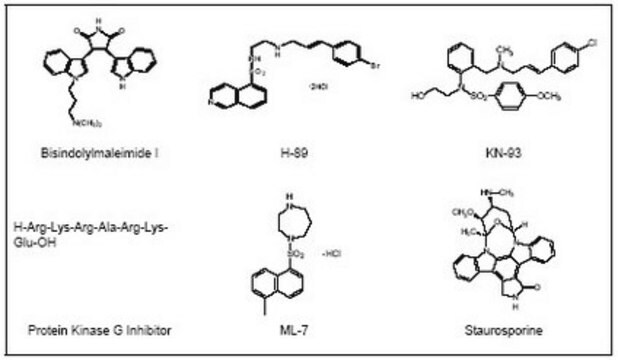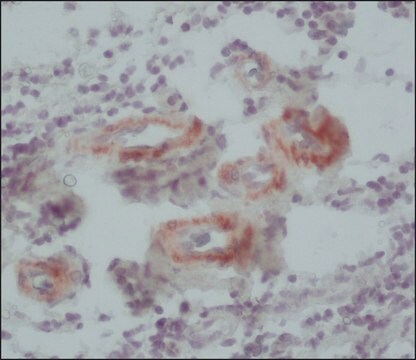SRP3106
LIGHT human
recombinant, expressed in Hi-5 Insect cells, ≥96% (SDS-PAGE), ≥96% (HPLC), suitable for cell culture
Synonym(s):
HVEM-L, TNFSF14
Sign Into View Organizational & Contract Pricing
All Photos(1)
About This Item
UNSPSC Code:
12352200
NACRES:
NA.32
Recommended Products
biological source
human
recombinant
expressed in Hi-5 Insect cells
Assay
≥96% (HPLC)
≥96% (SDS-PAGE)
form
lyophilized
mol wt
20.0-22.5 kDa
packaging
pkg of 15 μg
technique(s)
cell culture | mammalian: suitable
impurities
<0.1 EU/μg endotoxin, tested
color
white to off-white
UniProt accession no.
shipped in
wet ice
storage temp.
−20°C
Gene Information
human ... TNFSF14(8740)
General description
LIGHT belongs to the TNF family of ligands, and can signal through the herpes virus entry mediator type A receptor (HVEM, TNFRSF14), LTbR, or bind to a decoy receptor, DcR3. It is expressed in splenocytes, activated PBL, CD+8 tumor infiltrating lymphocytes, granulocytes, and monocytes. LIGHT has the ability to active NFkB, to co-stimulate the activation of lymphocytes and to induce apoptosis in certain human tumor cells. Recombinant human LIGHT has a calculated mass of 19.3 kDa containing 177 amino acid residues. Due to glycosylation LIGHT migrates between 20.0-22.5 kDa by SDS-PAGE under non-reducing conditions.
Biochem/physiol Actions
LIGHT belongs to the TNF family of ligands, and can signal through the herpes virus entry mediator type A receptor (HVEM, TNFRSF14), LTbR, or bind to a decoy receptor, DcR3. Recombinant human LIGHT has a calculated mass of 19.3 kDa containing 177 amino acid residues. Due to glycosylation LIGHT migrates between 20.0-22.5 kDa by SDS-PAGE under non-reducing conditions.
Sequence
RLGEMVTRLP DGPAGSWEQL IQERRSHEVN PAAHLTGANS SLTGSGGPLL WETQLGLAFL RGLSYHDGAL VVTKAGYYYI YSKVQLGGVG CPLGLASTIT HGLYKRTPRY PEELELLVSQ QSPCGRATSS SRVWWDSSFL GGVVHLEAGE KVVVRVLDER LVRLRDGTRS YFGAFMV
Physical form
Lyophilized from 20 mM Sodium Phosphate, pH 7.0.
Reconstitution
Centrifuge the vial prior to opening. Reconstitute in water to a concentration of 0.1-1.0 mg/ml. Do not vortex. This solution can be stored at 2-8°C for up to 1 week. For extended storage, it is recommended to further dilute in a buffer containing a carrier protein (example 0.1% BSA) and store in working aliquots at -20°C to -80°C.
Storage Class Code
11 - Combustible Solids
WGK
WGK 3
Flash Point(F)
Not applicable
Flash Point(C)
Not applicable
Choose from one of the most recent versions:
Certificates of Analysis (COA)
Lot/Batch Number
Don't see the Right Version?
If you require a particular version, you can look up a specific certificate by the Lot or Batch number.
Already Own This Product?
Find documentation for the products that you have recently purchased in the Document Library.
Huai Na Qiu et al.
Mediators of inflammation, 2014, 136463-136463 (2014-05-02)
Allergic asthma can cause airway structural remodeling, involving the accumulation of extracellular matrix and thickening of smooth muscle. Tumor necrosis factor (TNF) family ligand LIGHT (TNFSF14) is a cytokine that binds herpesvirus entry mediator (HVEM)/TNFRSF14 and lymphotoxin β receptor (LTβR).
Sook-Kyoung Heo et al.
Experimental & molecular medicine, 44(2), 149-158 (2011-11-25)
The development of gastric cancer (GC) is closely related to chronic inflammation caused by Helicobacter pylori infection, and herpes virus entry mediator (HVEM) is a receptor expressed on the surface of leukocytes that mediates potent inflammatory responses in animal models.
Rana Herro et al.
The Journal of allergy and clinical immunology, 136(3), 757-768 (2015-02-15)
Pulmonary fibrosis is characterized by excessive accumulation of collagen and α-smooth muscle actin in the lung. The key molecules that promote these phenotypes are of clinical interest. Thymic stromal lymphopoietin (TSLP) has been found at high levels in patients with
Rana Herro et al.
The Journal of investigative dermatology, 135(8), 2109-2118 (2015-03-20)
Several inflammatory diseases including scleroderma and atopic dermatitis display dermal thickening, epidermal hypertrophy, or excessive accumulation of collagen. Factors that might promote these features are of interest for clinical therapy. We previously reported that LIGHT, a TNF superfamily molecule, mediated
Bianca Crifo et al.
Journal of immunology (Baltimore, Md. : 1950), 202(5), 1521-1530 (2019-02-01)
Hypoxia is a common and prominent feature of the microenvironment at sites of bacteria-associated inflammation in inflammatory bowel disease. The prolyl-hydroxylases (PHD1/2/3) and the asparaginyl-hydroxylase factor-inhibiting HIF are oxygen-sensing enzymes that regulate adaptive responses to hypoxia through controlling the activity
Our team of scientists has experience in all areas of research including Life Science, Material Science, Chemical Synthesis, Chromatography, Analytical and many others.
Contact Technical Service








